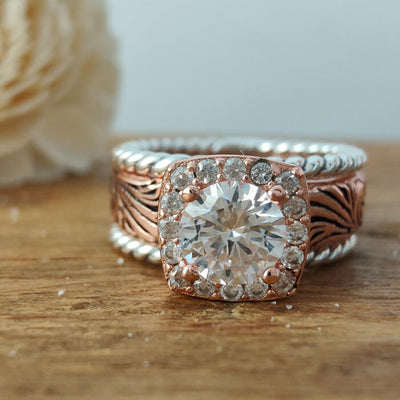Unlock the Mystique: Discover the Allure and Care Secrets of Turquoise Rings!
Turquoise rings have captivated jewelry lovers for centuries, enchanting individuals with their stunning hues and rich histories. This beautiful gemstone, with its unique blend of blue and green tones, has long been a symbol of protection, healing, and connection to the spiritual realm. Originating in the ancient civilizations of Persia, turquoise was cherished not only for its striking appearance but also for its believed powers. Today, it remains a popular choice for both everyday wear and special occasions, making it a staple in many jewelry collections. As we delve into the allure of turquoise rings, we will uncover their aesthetic appeal, cultural significance, and essential care secrets that will help you keep these precious pieces looking their best for years to come.

The Allure of Turquoise Rings
The aesthetic appeal of turquoise rings is undeniable. With colors ranging from soft sky blue to deep teal and earthy green, each piece showcases its own unique character. The variations in color occur due to the minerals present during the stone's formation, making every turquoise ring a one-of-a-kind treasure. Many rings feature intricate designs, set against silver or gold, which further enhances the gemstone’s natural beauty. For instance, I once attended a summer wedding where a friend wore a stunning turquoise ring set in a vintage-style band. The way it caught the sunlight added a vibrant pop of color to her elegant outfit, proving that turquoise can seamlessly complement both casual and formal attire. Whether you’re dressing up for a night out or accessorizing for a day at the beach, turquoise rings can elevate any look, making them a versatile addition to your jewelry box.
Cultural and Historical Significance
Turquoise has held immense cultural significance throughout history, serving as a symbol of wealth, power, and protection across various civilizations. In Native American culture, turquoise is revered as a sacred stone, believed to bring good fortune and offer protection to warriors. It is often incorporated into jewelry and ceremonial objects. Meanwhile, ancient Egyptians adorned their tombs and jewelry with turquoise, associating it with the goddess Hathor, who represented love and joy. Persian cultures also valued turquoise, using it to create exquisite jewelry for royalty, believing it to possess protective qualities against negative forces. This rich tapestry of cultural symbolism surrounding turquoise makes it not just a beautiful accessory but also a meaningful piece of history that connects wearers to ancient traditions and beliefs.
Identifying Quality Turquoise
When shopping for turquoise rings, understanding how to assess the quality of the stone is essential. The most notable factors to consider include color, matrix patterns, hardness, and treatment processes. High-quality turquoise typically features vibrant, consistent colors without excessive veining or discoloration. The matrix, which consists of the stone's natural patterns, can add character; however, a busy matrix may detract from the overall appeal. It's also important to note the hardness of the stone, as genuine turquoise has a hardness of 5 to 6 on the Mohs scale. Furthermore, be aware of treatment processes that may enhance the appearance of turquoise; while some treatments are acceptable, fully dyed stones should be avoided. If you're unsure, seek the advice of a knowledgeable jeweler to ensure you make an informed purchase and select a piece that is both beautiful and authentic.
Caring for Turquoise Rings
Proper care is essential to maintain the beauty and integrity of turquoise rings. Because turquoise is relatively soft, it requires special attention to avoid scratches and damage. To clean your ring, use a soft cloth dampened with water and mild soap; avoid harsh chemicals that can damage the stone. Store your turquoise rings separately from other jewelry to prevent scratching, ideally in a lined jewelry box. It’s also wise to remove your rings during activities such as swimming or exercising, as exposure to water and sweat can cause the stone to lose its luster over time. Regular maintenance not only keeps your turquoise rings looking their best but also helps to preserve their value and significance as cherished heirlooms.
Embracing the Beauty and Legacy of Turquoise Rings
Turquoise rings are more than just beautiful pieces of jewelry; they are rich in cultural significance and history, making them a meaningful addition to anyone's collection. Their captivating colors and unique patterns offer an allure that transcends time, while proper care ensures these treasures remain stunning for generations. As you explore the world of turquoise, take the time to appreciate the stories they hold and the beauty they bring. Investing in a turquoise ring is not just a fashion choice; it's an investment in a piece of history that you can wear with pride.




